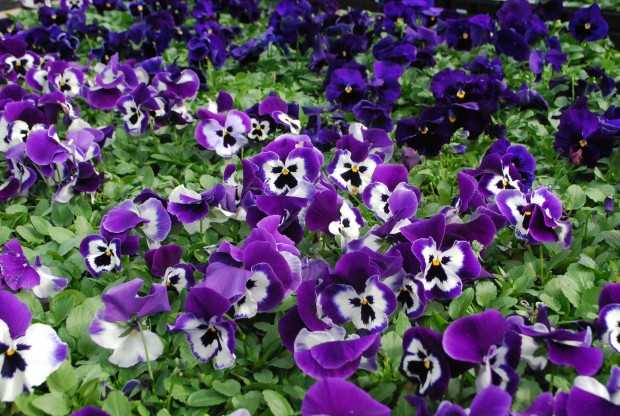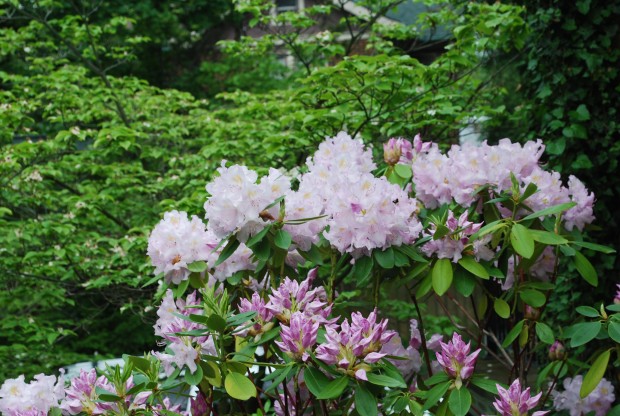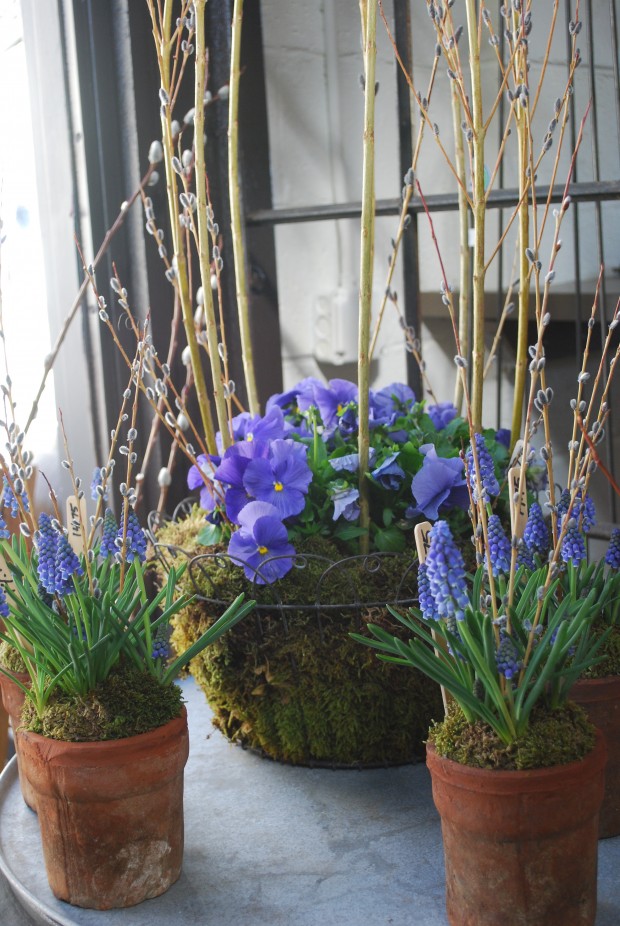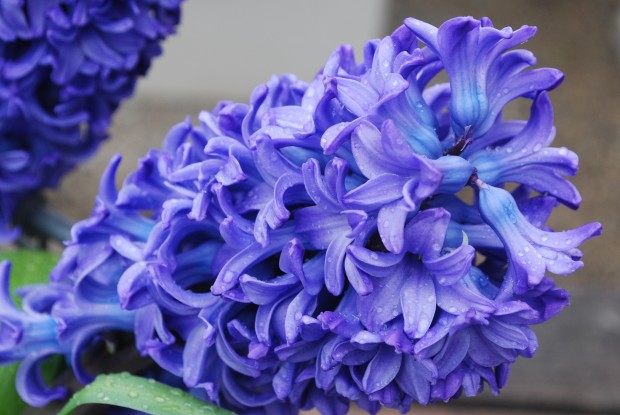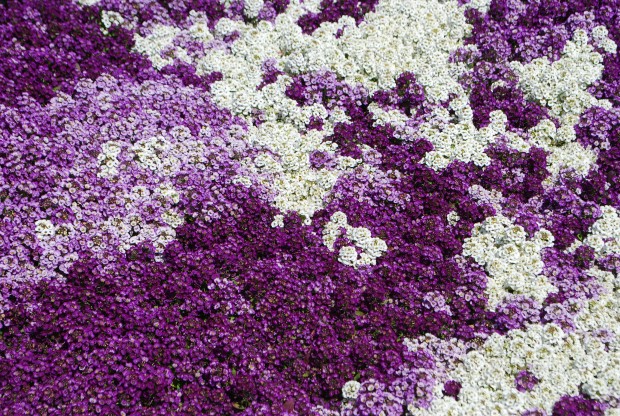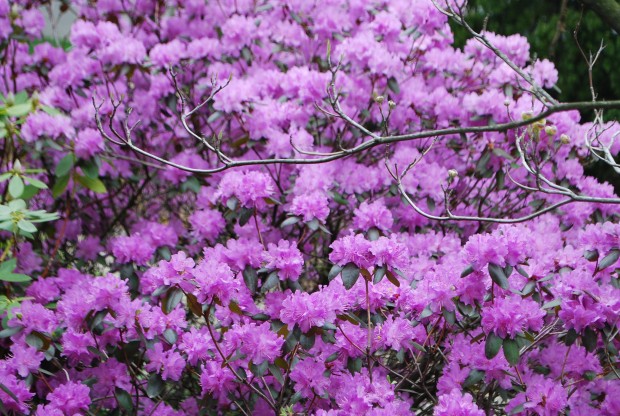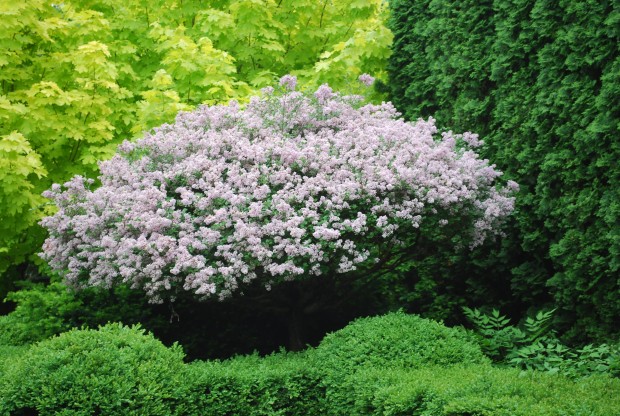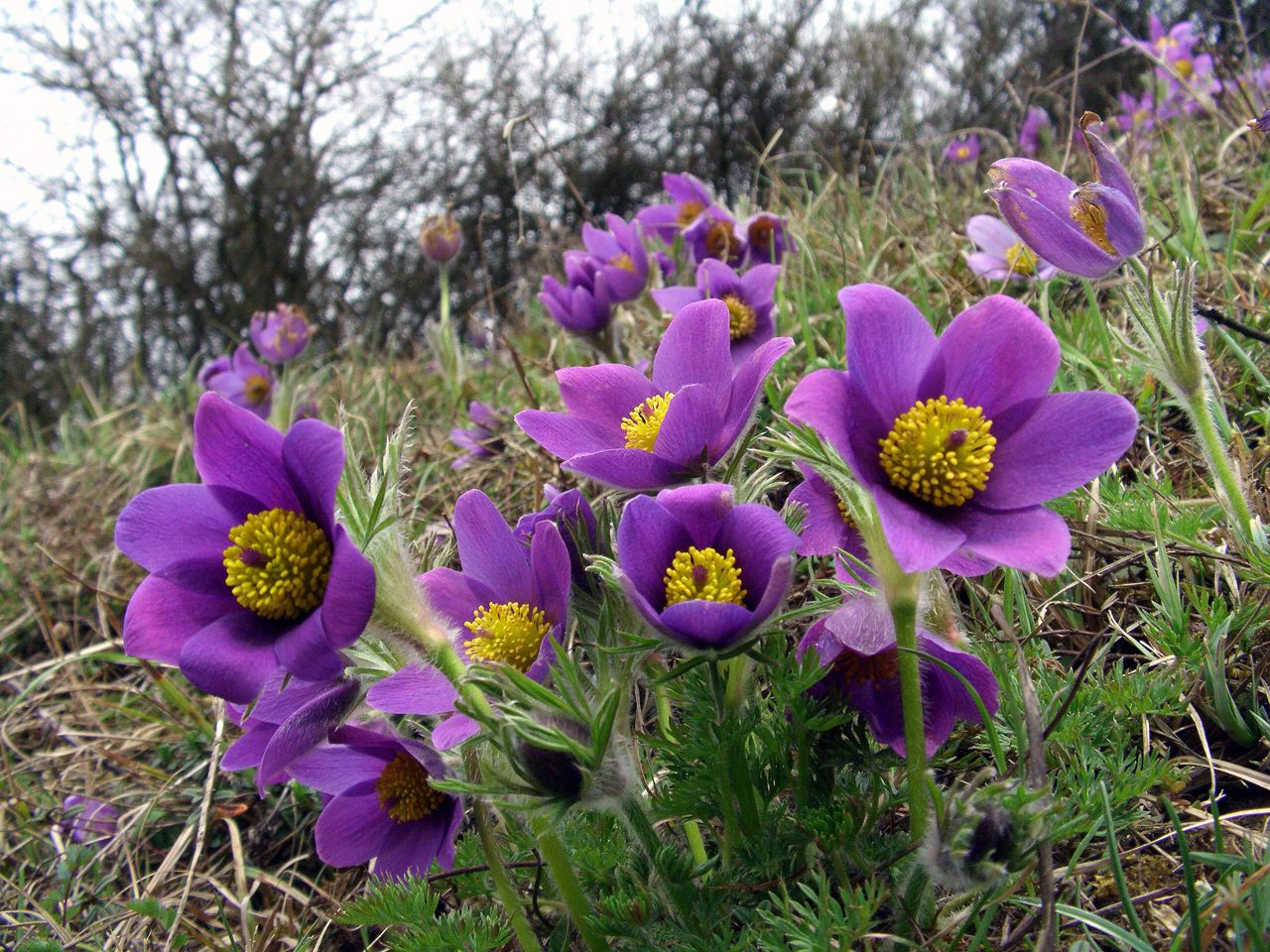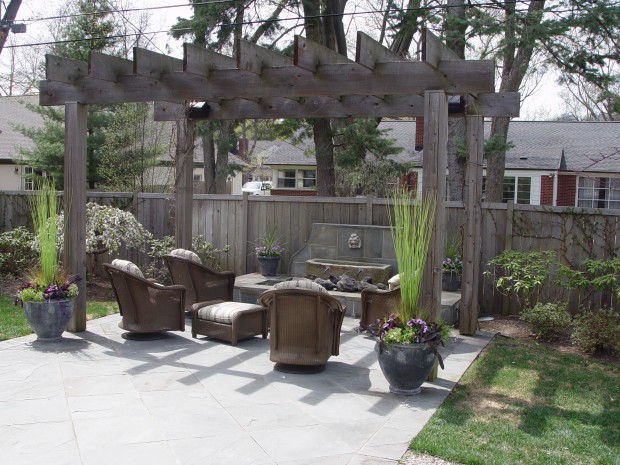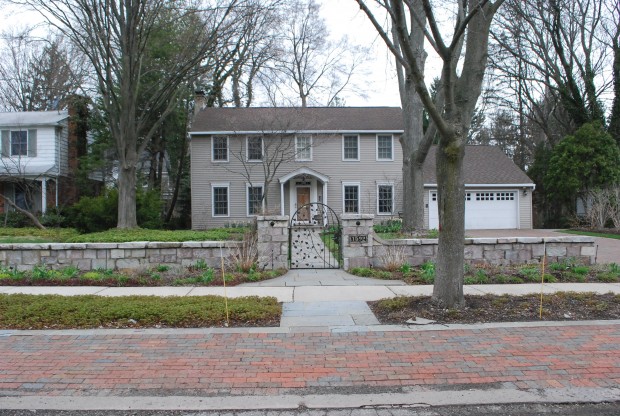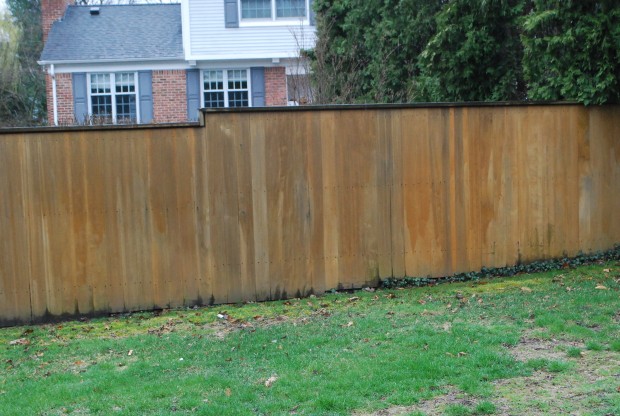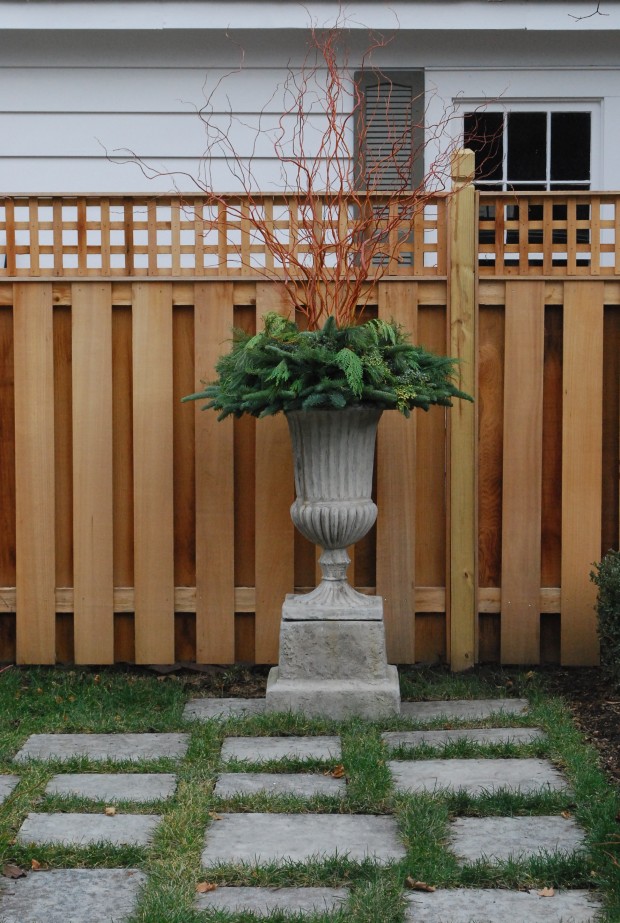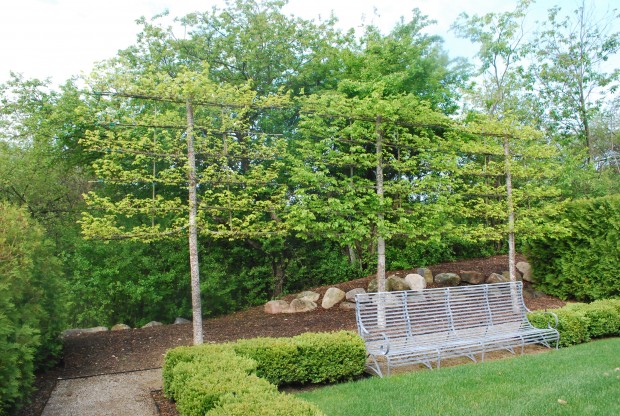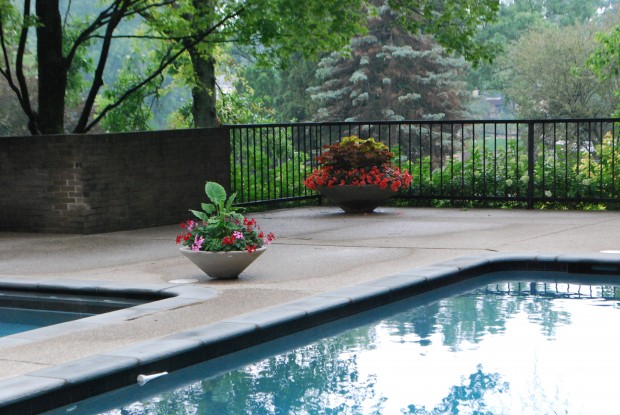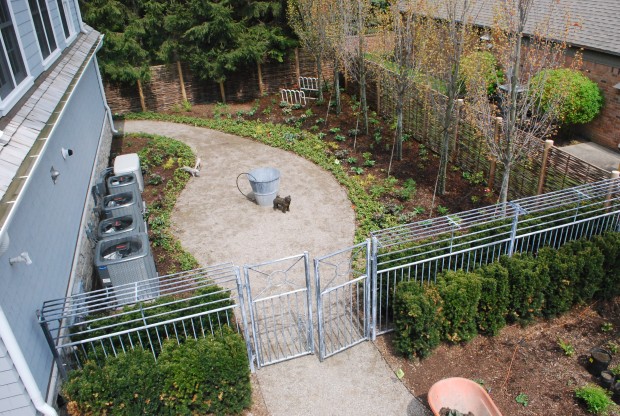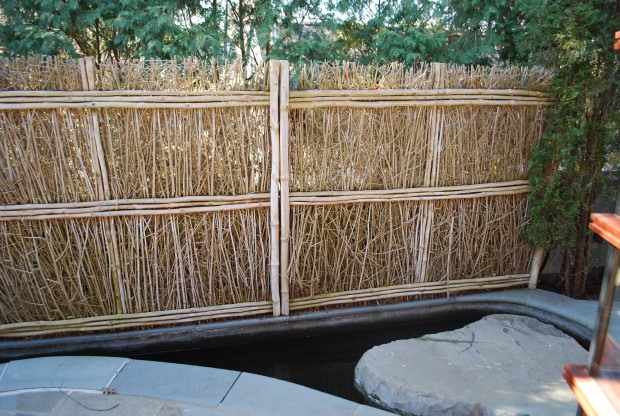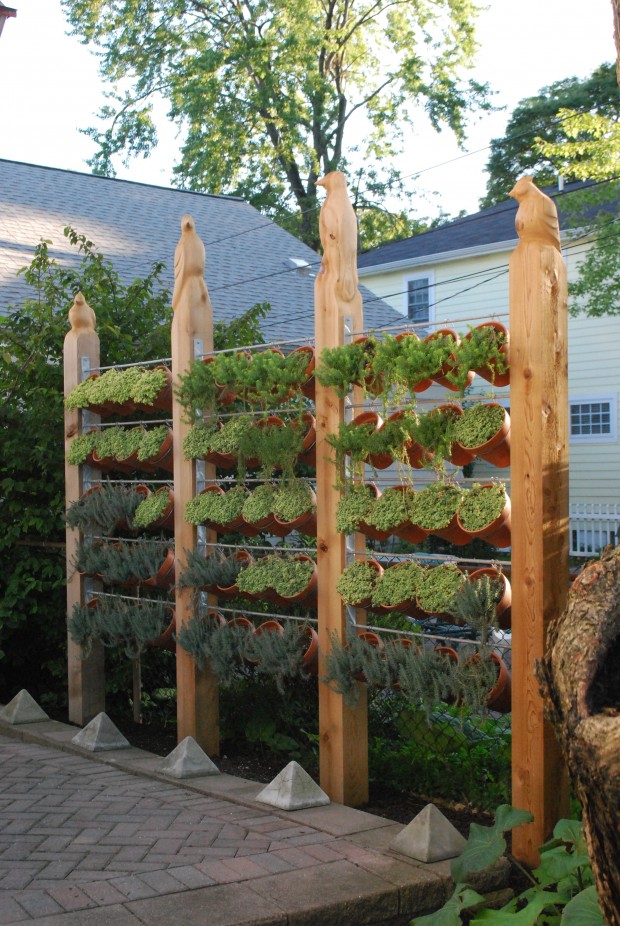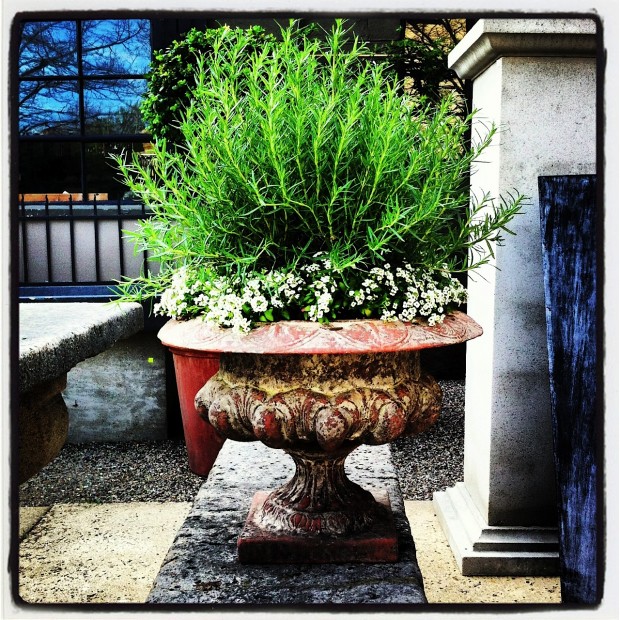 It’s hard to pick a favorite, but the spring season has an aura like no other. Any plant, whether it be a tree or summer flowering shrub, a bulb or a perennial, responds to nature’s call to break dormancy, and grow. From the biggest maple to the smallest hepatica, the plants are growing. There is a lot of commotion in the air. The plants are not pacing themselves, as they do in the heat of the summer. They are not slowing down, as in the fall. Or asleep, as in winter. It’s full speed ahead. The atmosphere in the garden is fully charged, electrified by all that energy being brought to bear-all at once- on the landscape. Rob has been taking instagram pictures the past few days. The options for filtering and electrifying color makes this spring container really feel like spring.
It’s hard to pick a favorite, but the spring season has an aura like no other. Any plant, whether it be a tree or summer flowering shrub, a bulb or a perennial, responds to nature’s call to break dormancy, and grow. From the biggest maple to the smallest hepatica, the plants are growing. There is a lot of commotion in the air. The plants are not pacing themselves, as they do in the heat of the summer. They are not slowing down, as in the fall. Or asleep, as in winter. It’s full speed ahead. The atmosphere in the garden is fully charged, electrified by all that energy being brought to bear-all at once- on the landscape. Rob has been taking instagram pictures the past few days. The options for filtering and electrifying color makes this spring container really feel like spring.
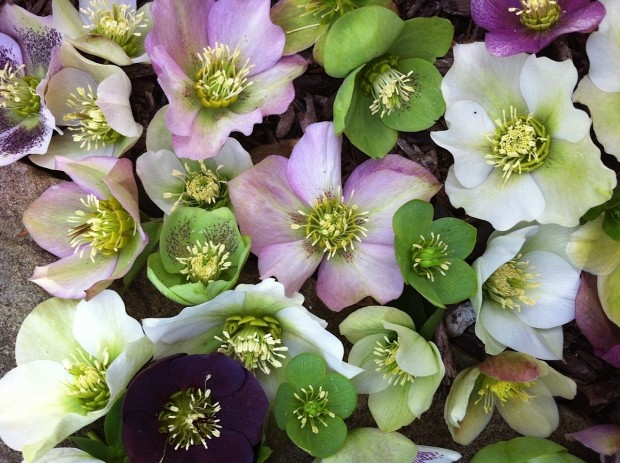 Each of these hellebore flowers tells a story about my collection. I have a fair number of plants. I especially appreciate the form of the flowers. But what I love about them the best is that they make a grand show in the spring. The hellebores coming into bloom are like the bells of spring ringing out. They are quite hardy. Old clumps are large; the foliage is evergreen until mid winter for me.
Each of these hellebore flowers tells a story about my collection. I have a fair number of plants. I especially appreciate the form of the flowers. But what I love about them the best is that they make a grand show in the spring. The hellebores coming into bloom are like the bells of spring ringing out. They are quite hardy. Old clumps are large; the foliage is evergreen until mid winter for me.
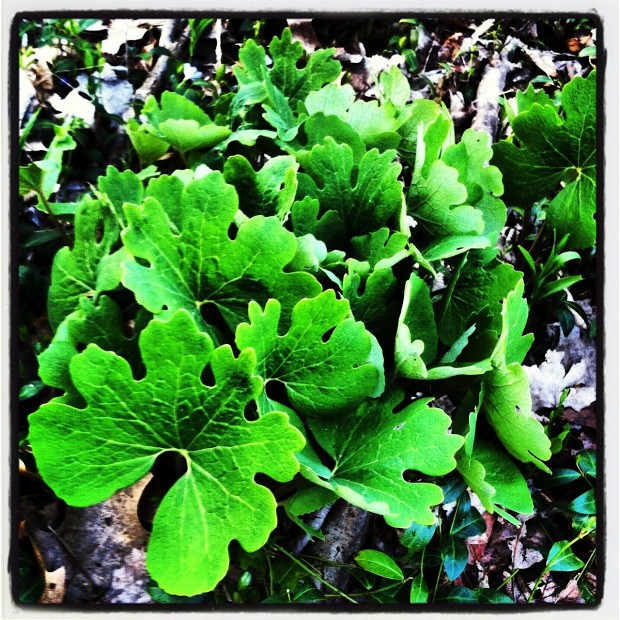 Sanguinaria, or bloodroot, is a native Michigan wildflower. A single leaf rises out of the ground, entirely curled around a single flower bud on its own leafless stalk. What a story this is, yes? The single white flowers are open for a few days at best, before the petals drop. If you do not check the emerging plant often in the spring, it could be you will miss the flower altogether. The small leaves are strikingly shaped and veined. Soon after flowering, the plant will go dormant until the following year. The spring season can be fraught with icy and windy weather. Though it is the same length as all of the other seasons, spring seems to come and go in an instant. The time of the bloodroot- hours.
Sanguinaria, or bloodroot, is a native Michigan wildflower. A single leaf rises out of the ground, entirely curled around a single flower bud on its own leafless stalk. What a story this is, yes? The single white flowers are open for a few days at best, before the petals drop. If you do not check the emerging plant often in the spring, it could be you will miss the flower altogether. The small leaves are strikingly shaped and veined. Soon after flowering, the plant will go dormant until the following year. The spring season can be fraught with icy and windy weather. Though it is the same length as all of the other seasons, spring seems to come and go in an instant. The time of the bloodroot- hours.
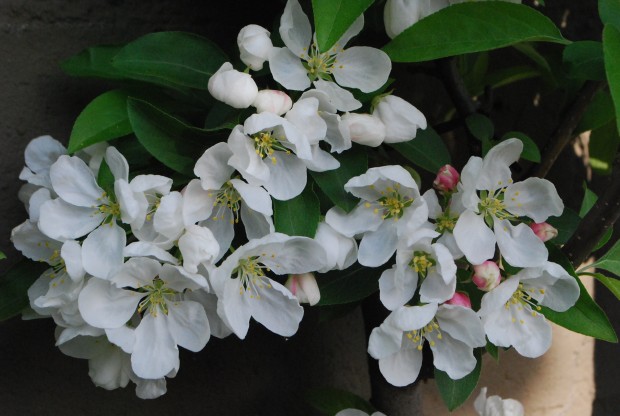 The crabapple “Donald Wyman” has bright pink buds, and a profusion of white flowers. A crabapple blanketed in flowers is one of spring’s most breathtaking events. In a cool spring season, they are a delight to the eye for a week or better. The teardrop shaped petals-how do they manage to stay attached on a windy spring day? Crabapples in bloom-glorious.
The crabapple “Donald Wyman” has bright pink buds, and a profusion of white flowers. A crabapple blanketed in flowers is one of spring’s most breathtaking events. In a cool spring season, they are a delight to the eye for a week or better. The teardrop shaped petals-how do they manage to stay attached on a windy spring day? Crabapples in bloom-glorious.
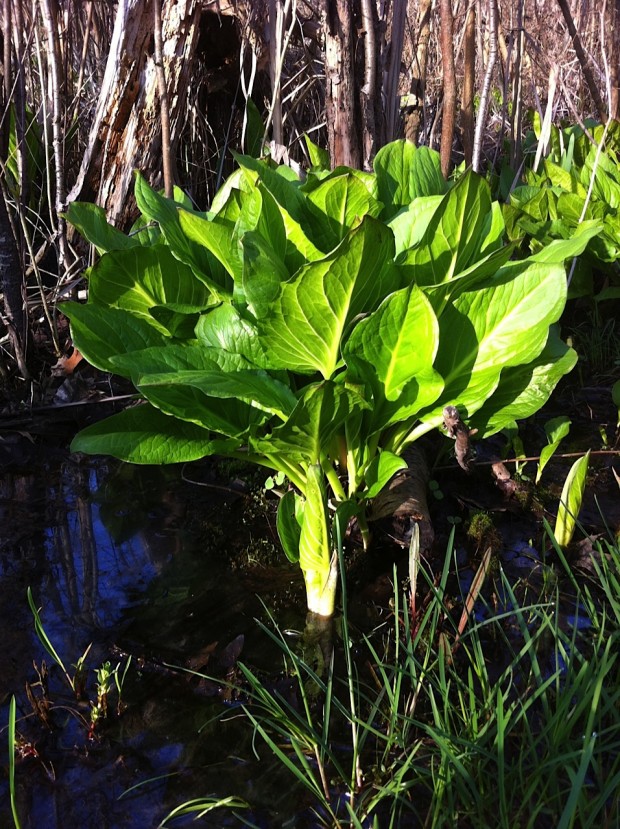 In swampy areas, the skunk cabbage forms massive leafy clumps that look good enough to eat. However, skunk cabbage is poisonous to mammals. The plants will warn you. The leaves when disturbed smell like rotten meat. This spring beauty has luscious looks, but should be admired from afar.
In swampy areas, the skunk cabbage forms massive leafy clumps that look good enough to eat. However, skunk cabbage is poisonous to mammals. The plants will warn you. The leaves when disturbed smell like rotten meat. This spring beauty has luscious looks, but should be admired from afar.
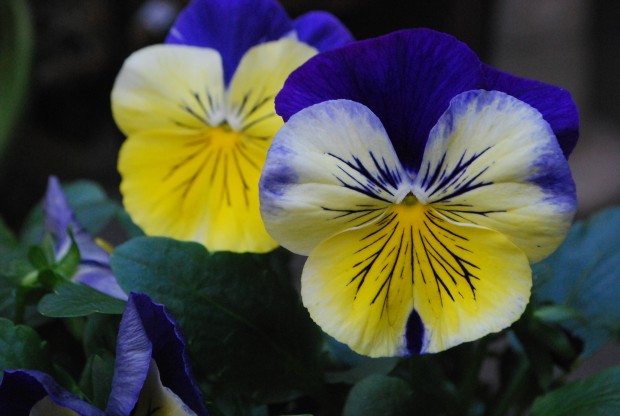 Today’s pansies and violas look much different than their more self effacing ancestors. This particular bicolor pansy, with its distinctive dark whiskers, is saturated with intense color. This is spring blooming at its most robust. Though the pansies and violas do not really pick up steam, and flower heavily until the beginning of June, each individual face announces the coming of spring in the most cheery way imaginable. They are so unlike any other flower in form and color. Fault me if you wish, but a pansy in August would be out of place. They belong to spring.
Today’s pansies and violas look much different than their more self effacing ancestors. This particular bicolor pansy, with its distinctive dark whiskers, is saturated with intense color. This is spring blooming at its most robust. Though the pansies and violas do not really pick up steam, and flower heavily until the beginning of June, each individual face announces the coming of spring in the most cheery way imaginable. They are so unlike any other flower in form and color. Fault me if you wish, but a pansy in August would be out of place. They belong to spring.
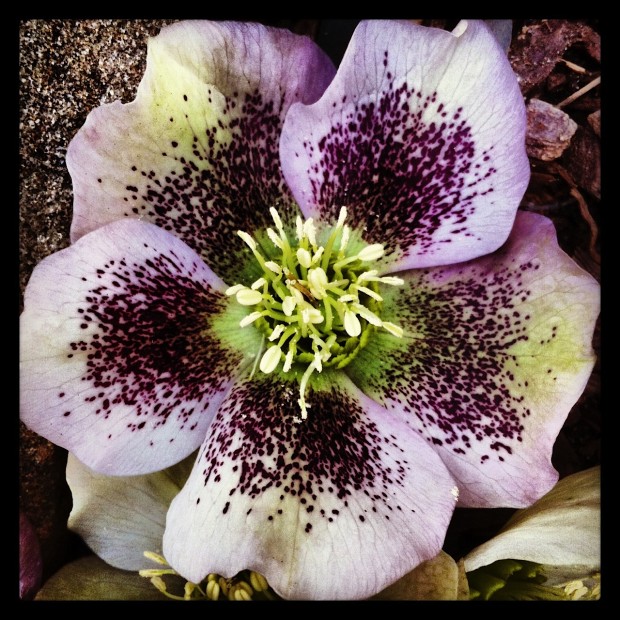 Rob’s instagram photograph of a dark speckled hellebore proves that spring can also be moody and sultry . Rainy and chilly. It also makes the point loud and clear that the atmosphere of a landscape can be altered by light and color-to spectacular effect. Creating a mood, or an atmosphere in a garden is one of the most difficult aspects of landscape design. It cannot be taught, nor can it be forced. It can be aspired to. Spring is that season that every gardener can turn loose of the past, and start fresh. The sap rises in the plants and the gardeners alike.
Rob’s instagram photograph of a dark speckled hellebore proves that spring can also be moody and sultry . Rainy and chilly. It also makes the point loud and clear that the atmosphere of a landscape can be altered by light and color-to spectacular effect. Creating a mood, or an atmosphere in a garden is one of the most difficult aspects of landscape design. It cannot be taught, nor can it be forced. It can be aspired to. Spring is that season that every gardener can turn loose of the past, and start fresh. The sap rises in the plants and the gardeners alike.
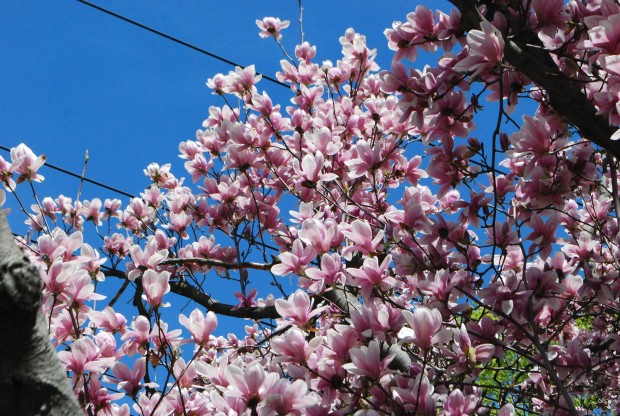 The saucer magnolia features very large flowers of great substance. The queen bee/Sarah Bernhardt of the spring flowering trees, this magnolia likes cool spring temperatures, but not too cool. Warm spring temperatures, but not too warm. A good bloom demands next to perfect conditions as if it were a God given right. It seems like every Michigan spring features some weather element or another which causes all of the petals to fall to the ground in a heap. A thick mulch of magnolia petals on the ground-that would be our spring.
The saucer magnolia features very large flowers of great substance. The queen bee/Sarah Bernhardt of the spring flowering trees, this magnolia likes cool spring temperatures, but not too cool. Warm spring temperatures, but not too warm. A good bloom demands next to perfect conditions as if it were a God given right. It seems like every Michigan spring features some weather element or another which causes all of the petals to fall to the ground in a heap. A thick mulch of magnolia petals on the ground-that would be our spring.
